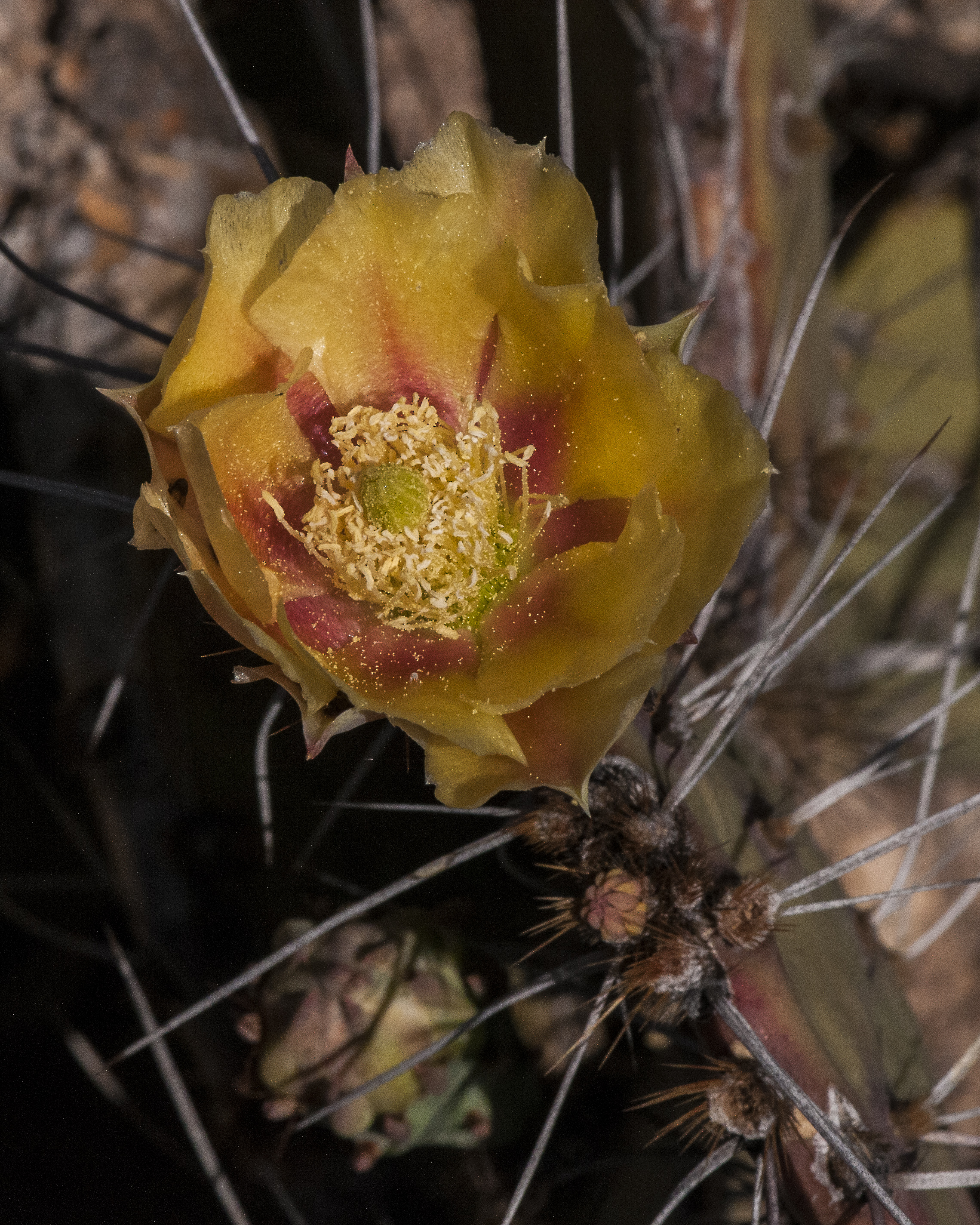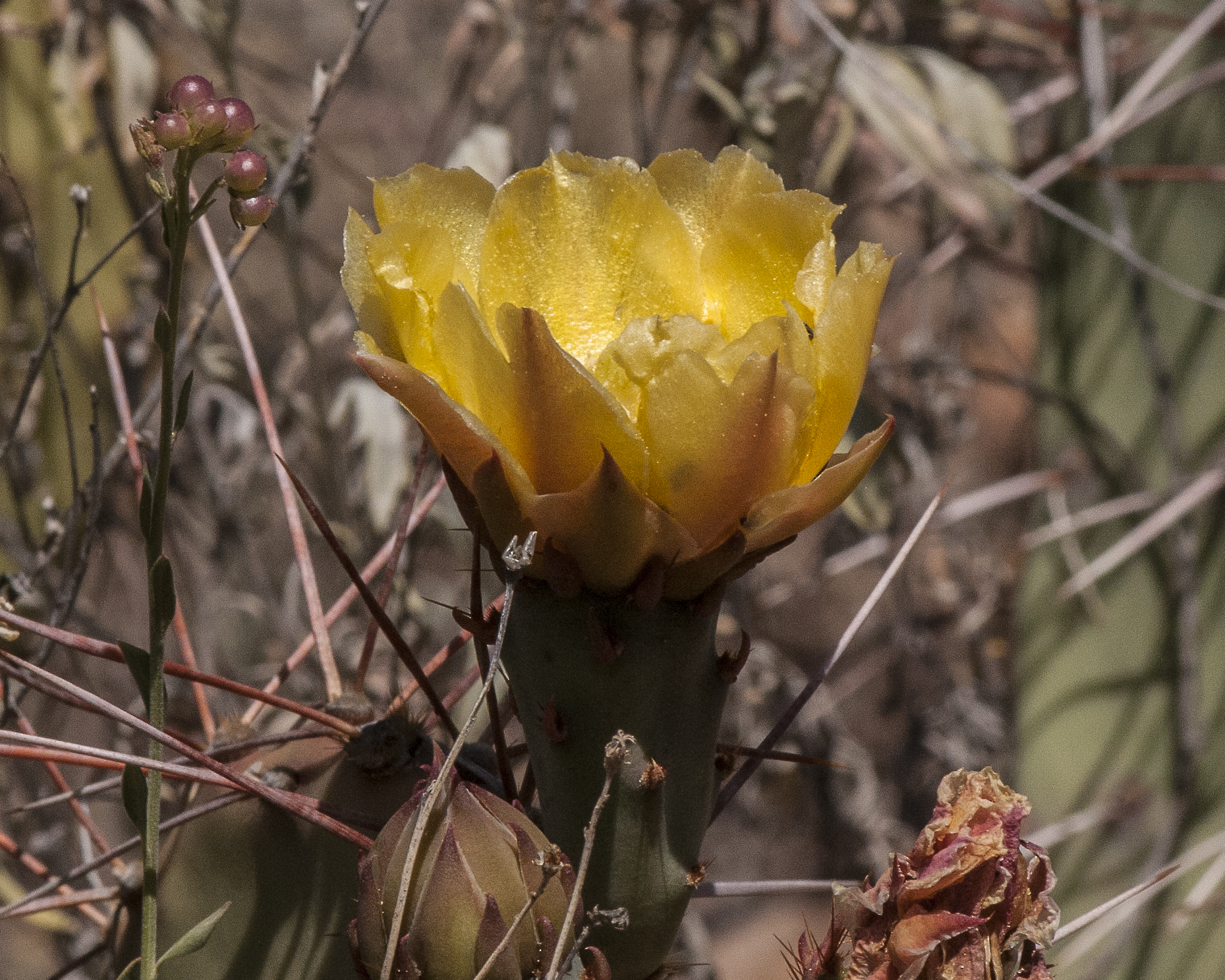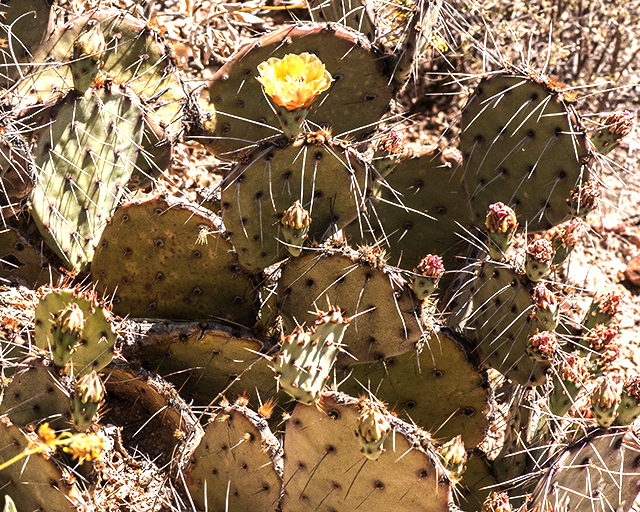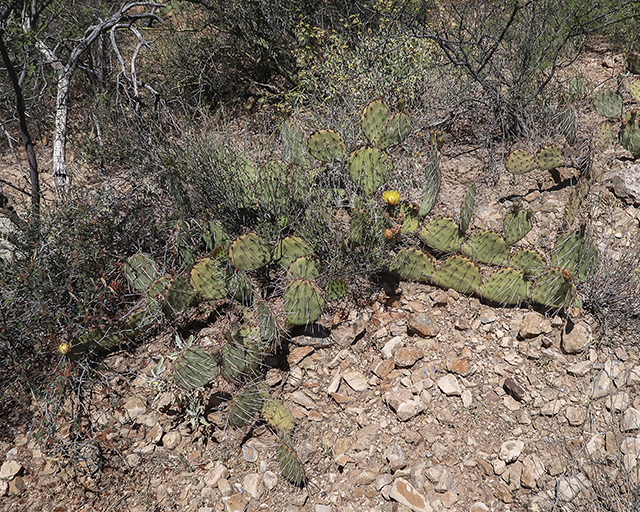Wildflowers of Southern Arizona
Tulip Pricklypear.
Opuntia phaeacantha.
Cactus (Cactaceae) family.
Duration: Perennial. Protected Status: Salvage restriced status in Arizona. Spines: emerge from obovate to elliptic, tan to brown areoles which turn gray with age; spines present at most areoles or sometimes only on the upper quarter of each pad; when present, spines 2-8 per areole, with the largest spines 3-7 cm long, usually deflexed, straight or curved, and distinctly wide and flat at the base, the color brown to red-brown or chalky white; each areole has a crescent-shaped patch of tan to red-brown glochids (fine barbed bristles), up to 5 mm long. Flowers: Petals numerous, yellow with red near the base, or occasionally entirely pink or red, 3-4 cm long; stamens numerous, with filaments that are greenish near the base and pale yellow to white near the top; style white, topped with a ring of green to yellow-green stigma lobes. Fruits: fleshy, wine-red to purple on the outside and with greenish or reddish flesh in the inside, spineless, obovate to barrel-shaped, 3-5 cm long by 2-3 cm wide, with about 20 areoles; seeds round, tan-colored, 4-5 mm wide. Ecology: Found on sandy to rocky soils, below 7,000 ft (2134 m), flowers April-June. Distribution: s CA, s NV, s UT, AZ, CO, NM, s KS, OK, TX, SD; south to n MEX. Notes: This is a notoriously variable species within a notoriously confusing and much-hybridizing genus. Several former varieties were recently re-assigned to O. engelmannii, a species with which this taxon is known to hybridize. Distinguish O. phaeacantha by the usually sprawling, decumbent growth form; pads turning reddish (or occasionally purplish) after stress; dense glochids at each areole; the usually downward-pointing brown spines; flower petals that are yellow with reddish-peach bases or reddish throughout; and the fleshy fruits with skin the color of red wine and often greenish flesh if you cut them open. Distinguished from the similar O. engelmanii by the trailing growth form, usually smaller pads (15-40 cm long in O. engelmannii vs. 10-25 cm in this species), density of glochids, and the flower color (O. engelmannii has yellow to red flowers but not bicolored). Ethnobotany: The fruit is edible and is eaten fresh or dried, made into jams, jellies, juice and wine; pads are also edible and were prepared by roasting, boiling, or pulping and making into cakes; the seeds were ground into flour, although some say that prickly pear seeds are toxic and should not be eaten in quantity. Etymology: Opuntia is from the Latin root puncti for prickled; phaeacantha is from the Greek root phaeo for dark or dusky and akantha, thorn.
Rincon Mountains
Saguaro National Park East.
Location: Loma Alta Trail .75 mi from trailhead.
4/15/17
See SEINet Pictures and Description





